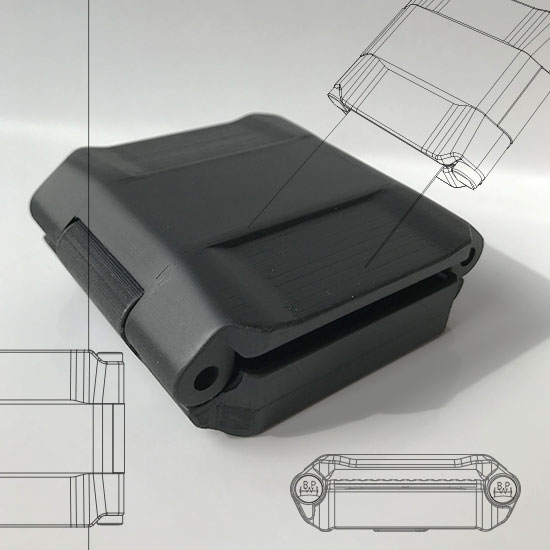A key technology for autonomous transport
BPW’s intelligent load securing system iGurt received the German Innovation Award in "Gold" in the "Excellence in Business to Business – Automotive Technologies" category.
The iGurt is particularly worth its weight in gold for hauliers, who have to claim transport damages of around 1.2 billion euros annually from their insurance companies. Inadequately secured cargo can not only fall over, it can even cause the entire drawbar trailer to lurch from side to side and tip over, causing devastating accidents. Up until now, truck drivers have only secured their cargo on the basis of their their instincts and visual judgement. If the strap is too tight, however, it can damage the cargo. If it's too loose, it can start to slip and come completely detached from the lock. Katharina Kermelk (30), a product manager at BPW’s Innovation Center for Mechatronics in Wiehl, Germany, is now giving the lashing strap a voice: an easy-to-use, robust sensor fastened to the strap displays the preload directly on the housing by means of an LED and transmits it to an app on the driver’s mobile phone while driving. Both the iGurt and the app are extremely intuitive – and can be connected to telematics systems in the future. This means that the haulier will also be able to track and document cargo securing remotely.
The iGurt still has tremendous potential for the future, as Katharina Kermelk reveals: ’The iGurt could considerably simplify load securing checks by the police, for example. It is conceivable that trucks equipped with the iGurt could be inspected and waved through remotely. And digital cargo securing is also necessary for autonomous transport – when trucks drive themselves, the cargo must also be able to monitor itself, report on its own and most importantly, stop the vehicle in the event of an emergency. This is also why the iGurt has attracted a great deal of interest from research institutions and innovation laboratories in the vehicle and insurance sectors that are working on the autonomous transport system of the future.’
"The submitted innovations are evaluated with a focus on user-centricity. It is the distinguishing feature of the German Innovation Award", explains Andrej Kupetz, managing director of the German Design Council. "This is especially successful if future users are involved in product and design development at an early stage."
The German Innovation Award’s evaluation criteria include aspects such as the level of innovation, user benefit, and cost-effectiveness. The winners were chosen by a jury of distinguished experts – including physicists, patent consultants, computer scientists, financing specialists, product designers, technology historians and marketers. ‘This is how we guarantee an individual, neutral and professional assessment,’ emphasises Kupetz.The German Innovation Award was initiated and implemented by the German Design Council, which was established by German parliament in 1953 and funded by the Federation of German Industries (BDI). The foundation’s mission is to enhance the competitiveness of German companies, which it has been pursuing for 66 years now.
go to BPW
go to German Innovation Award


